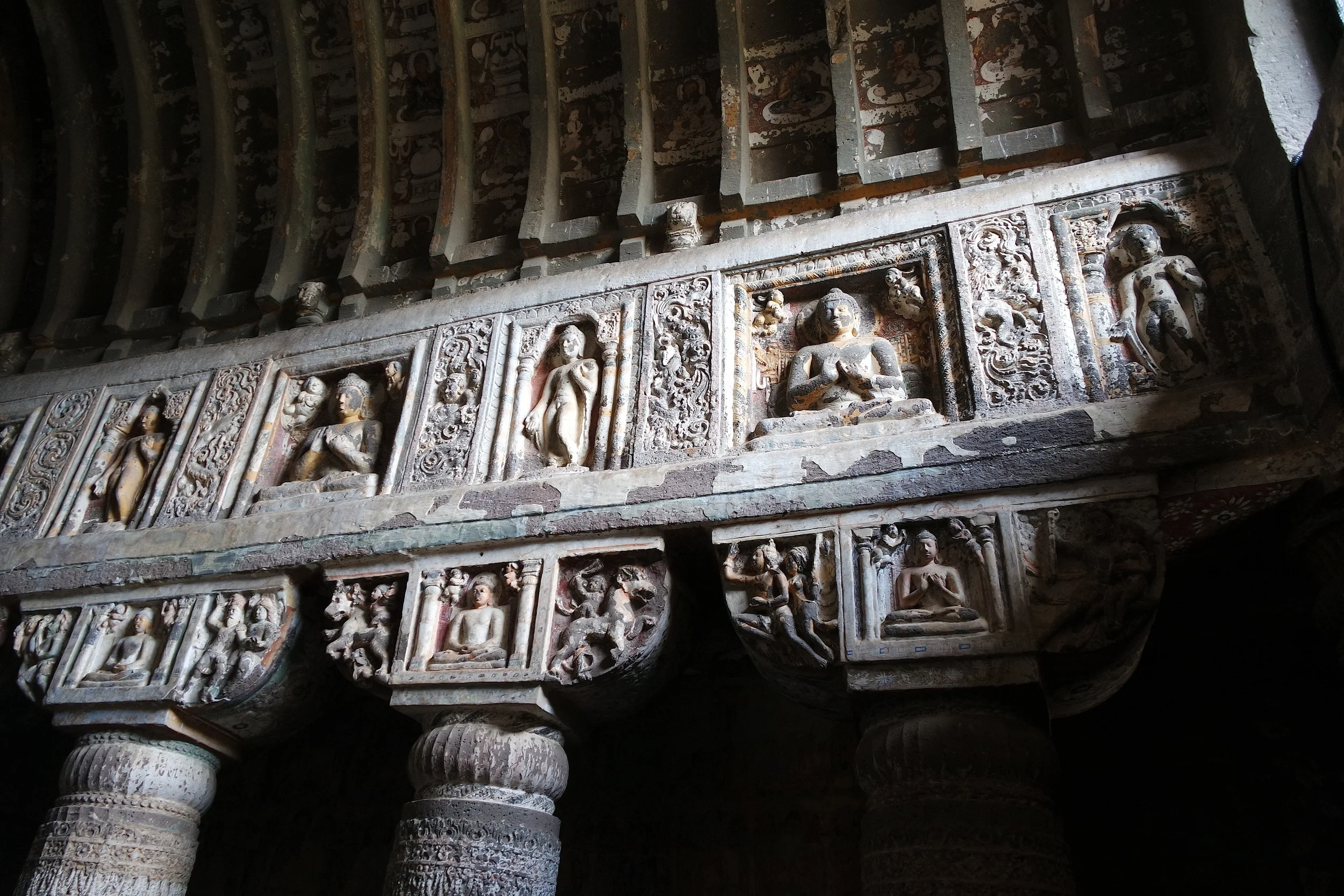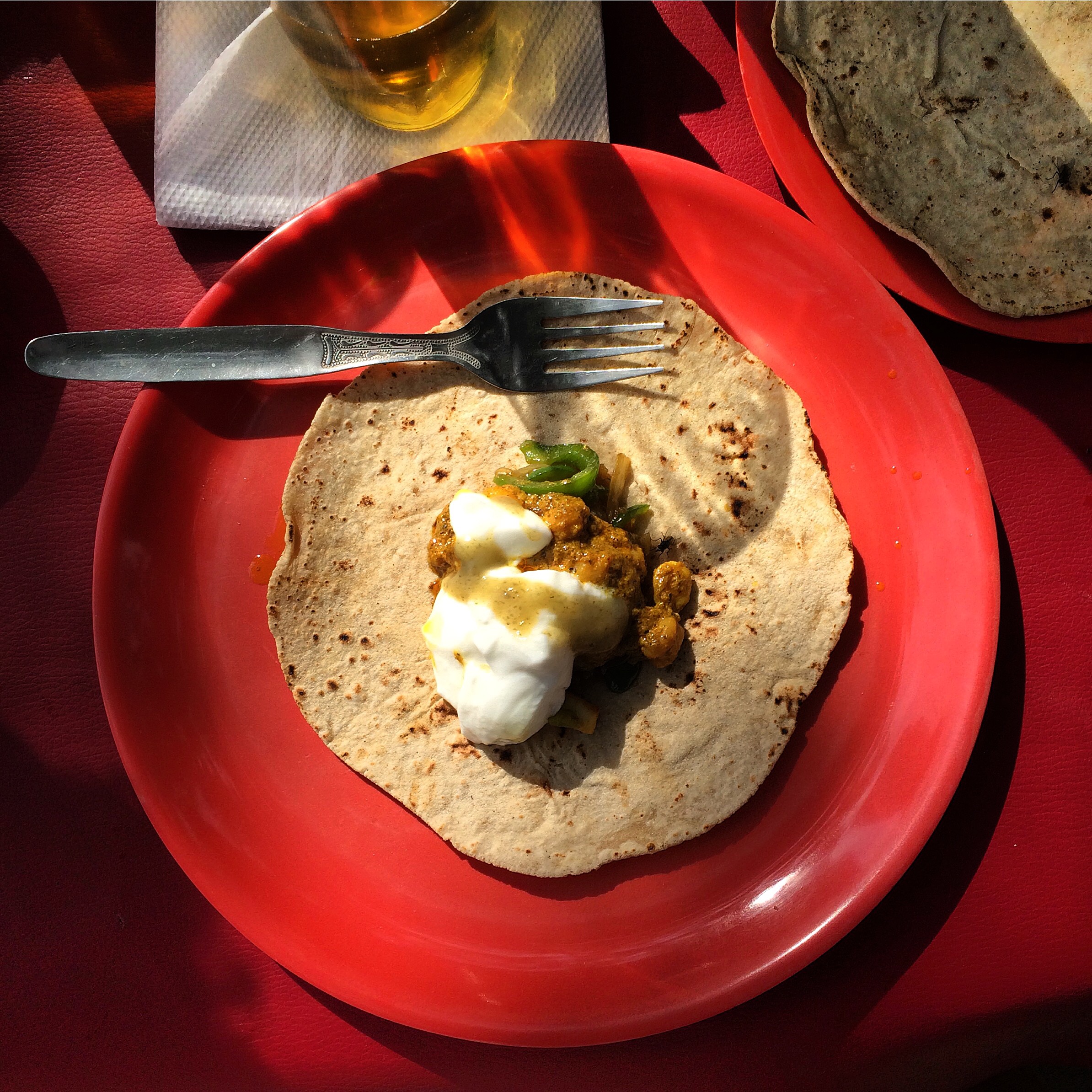
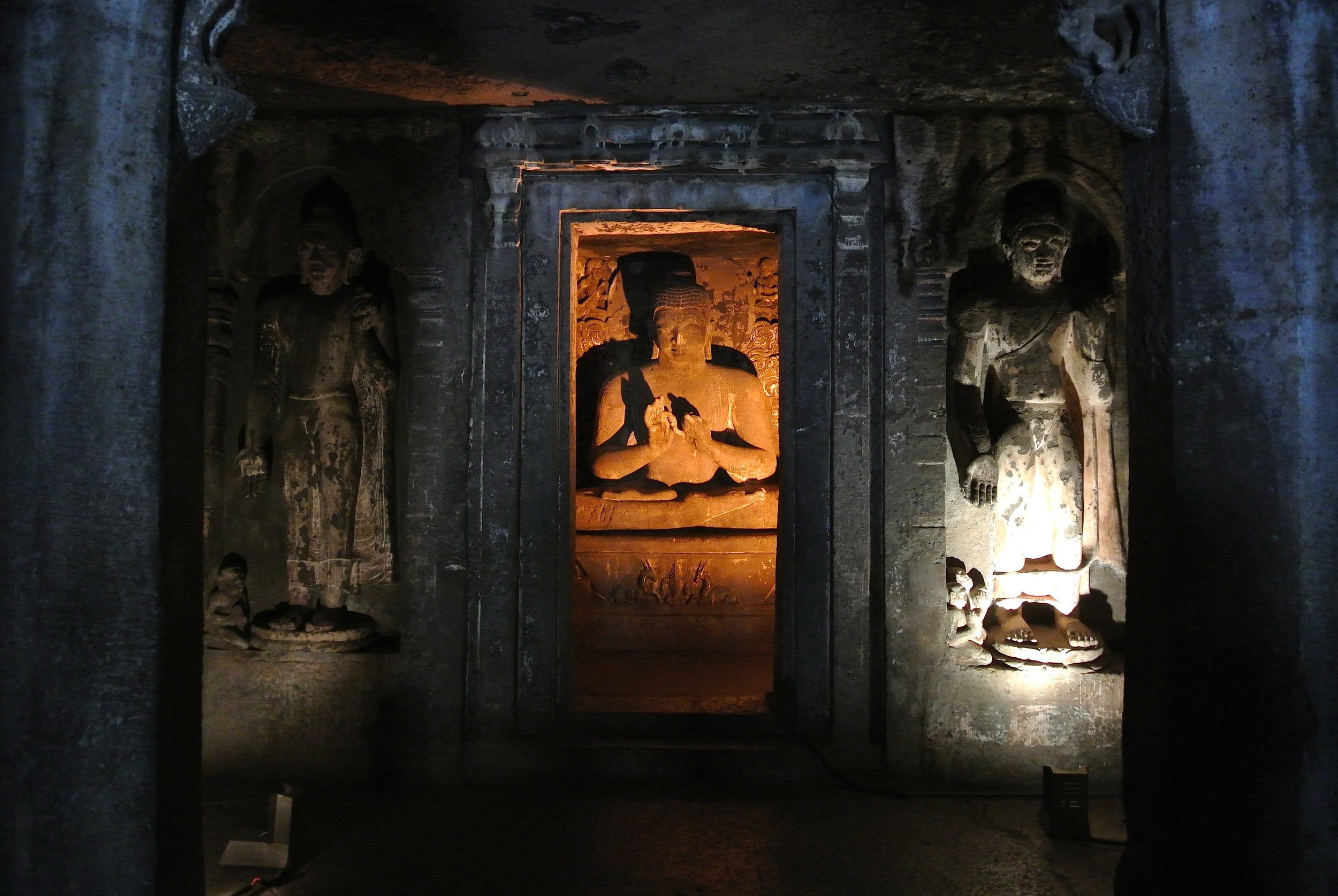
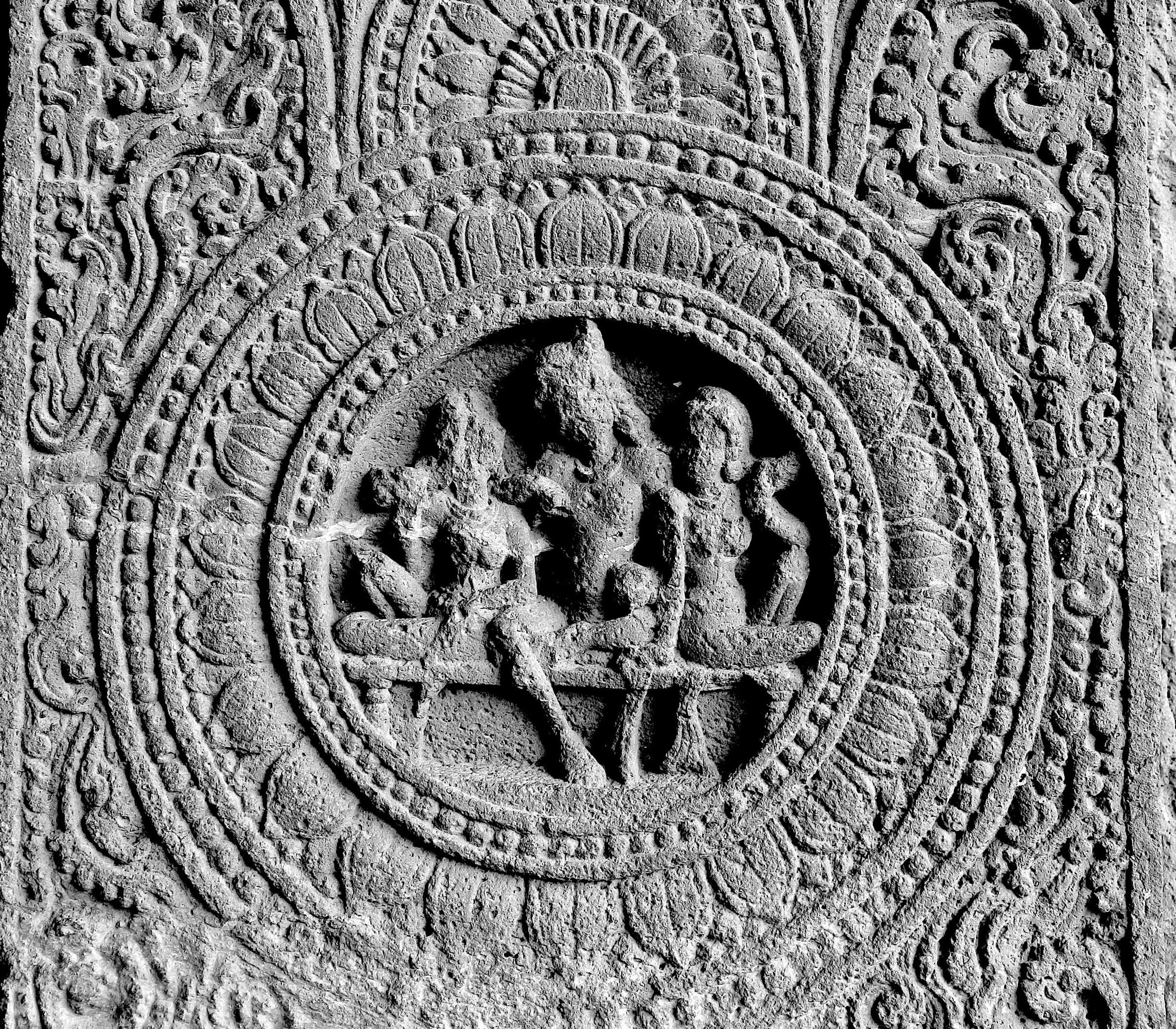
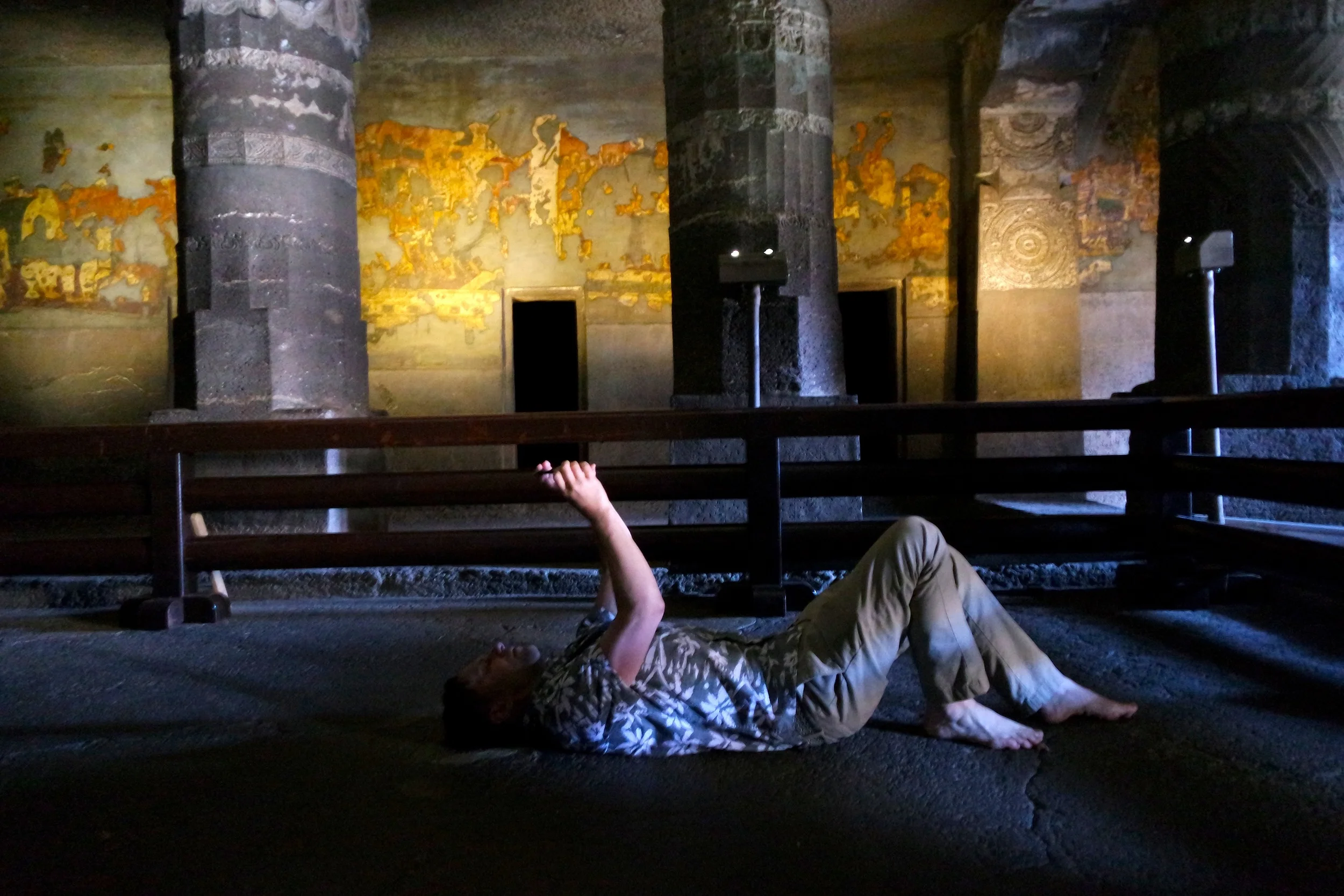
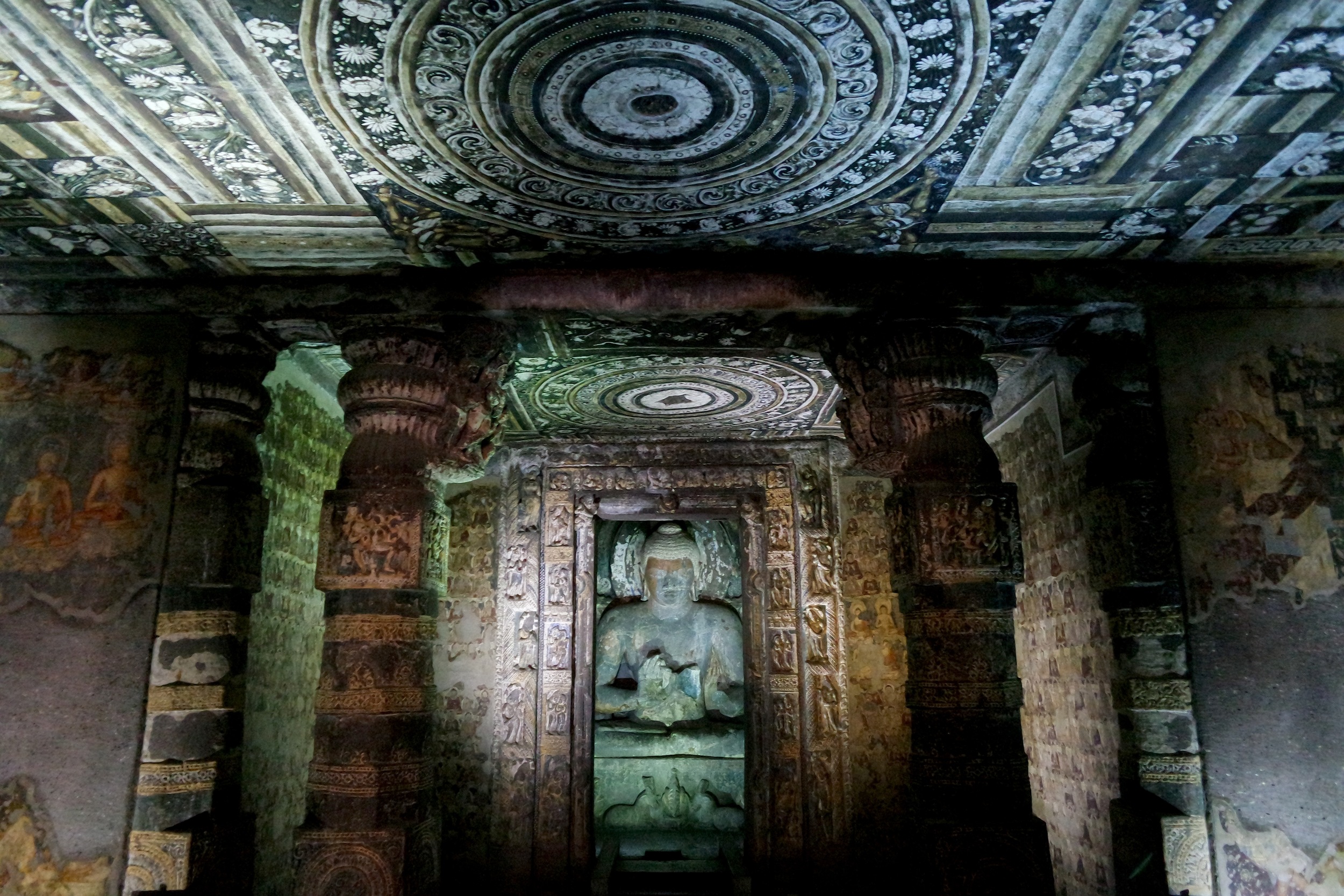
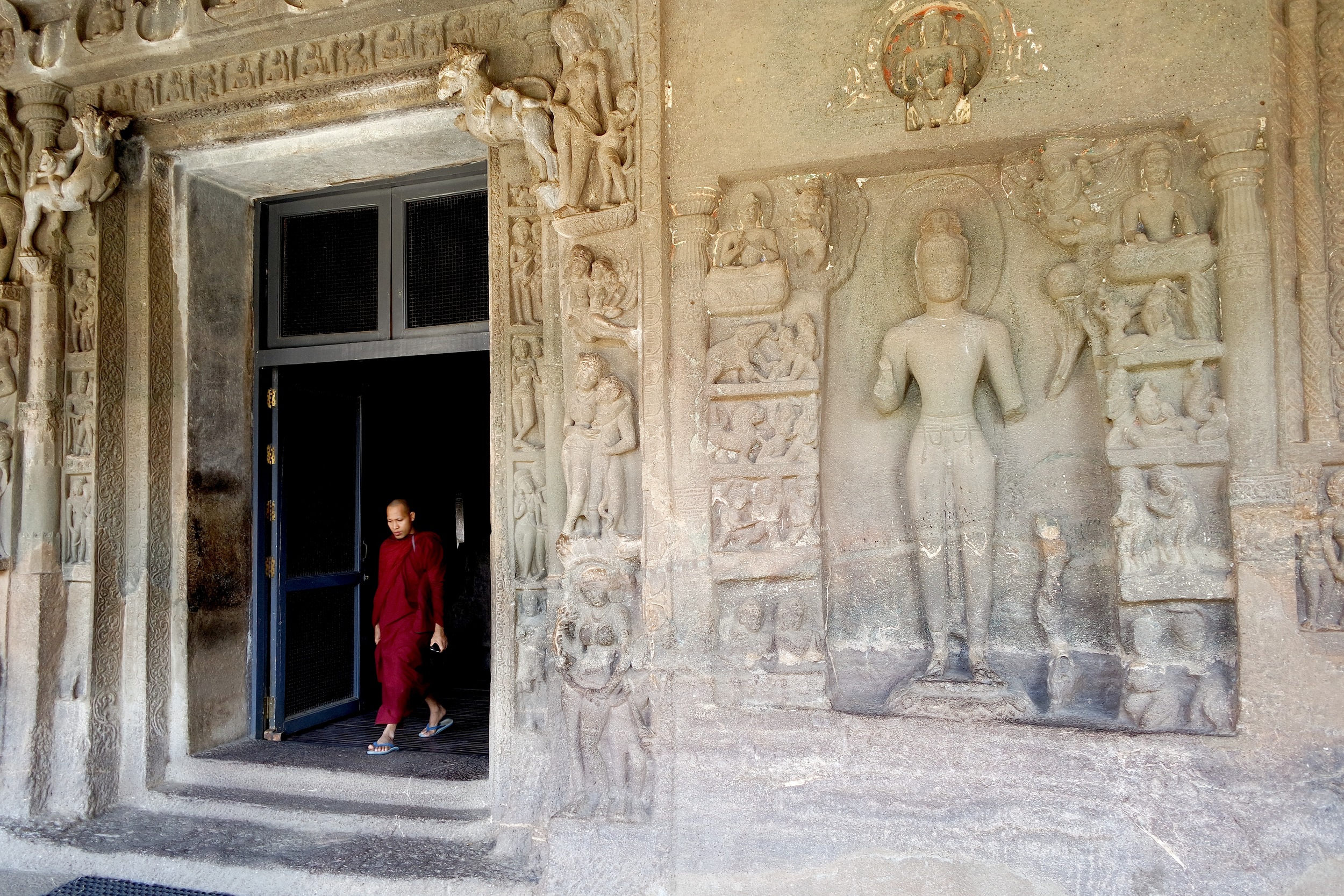
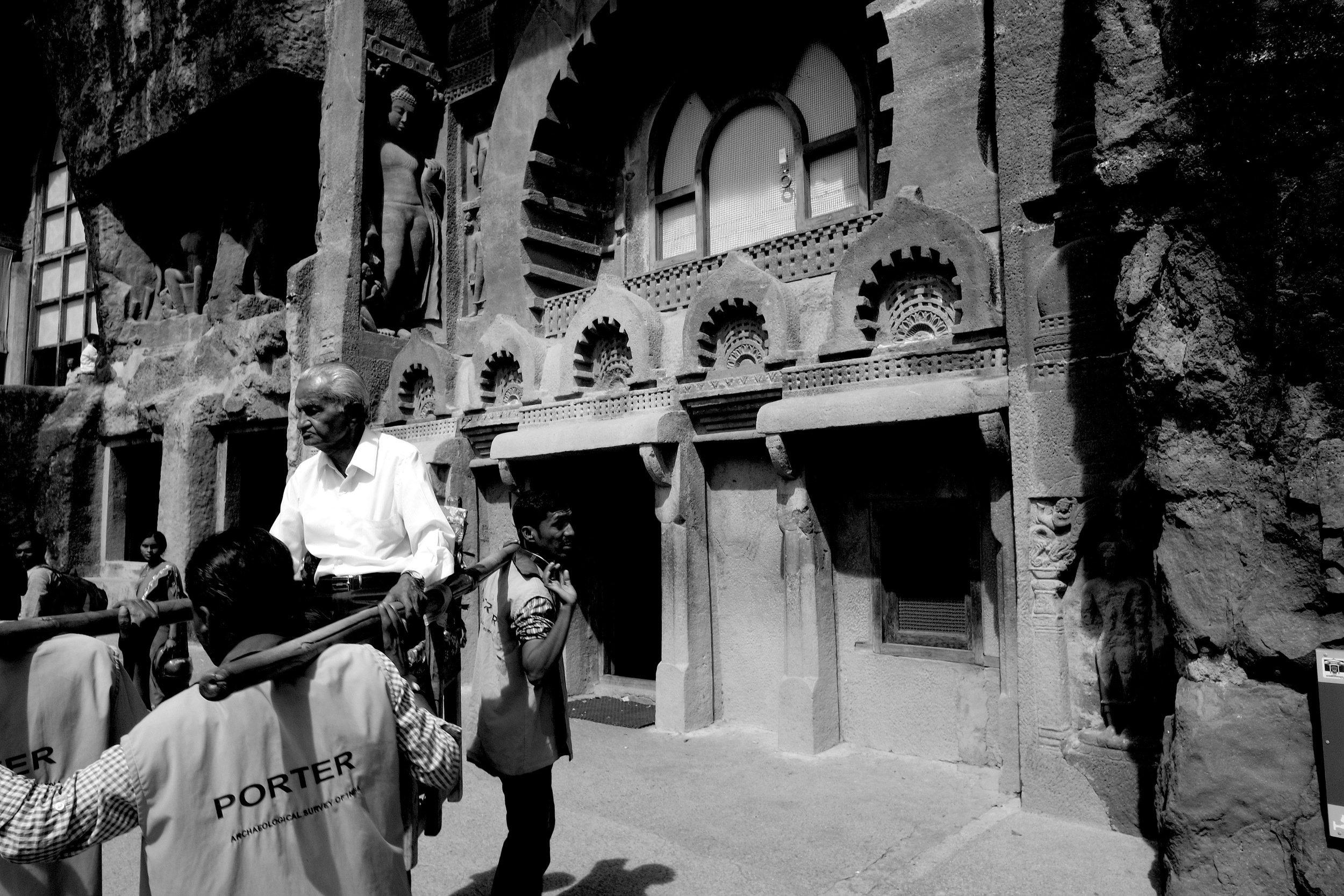
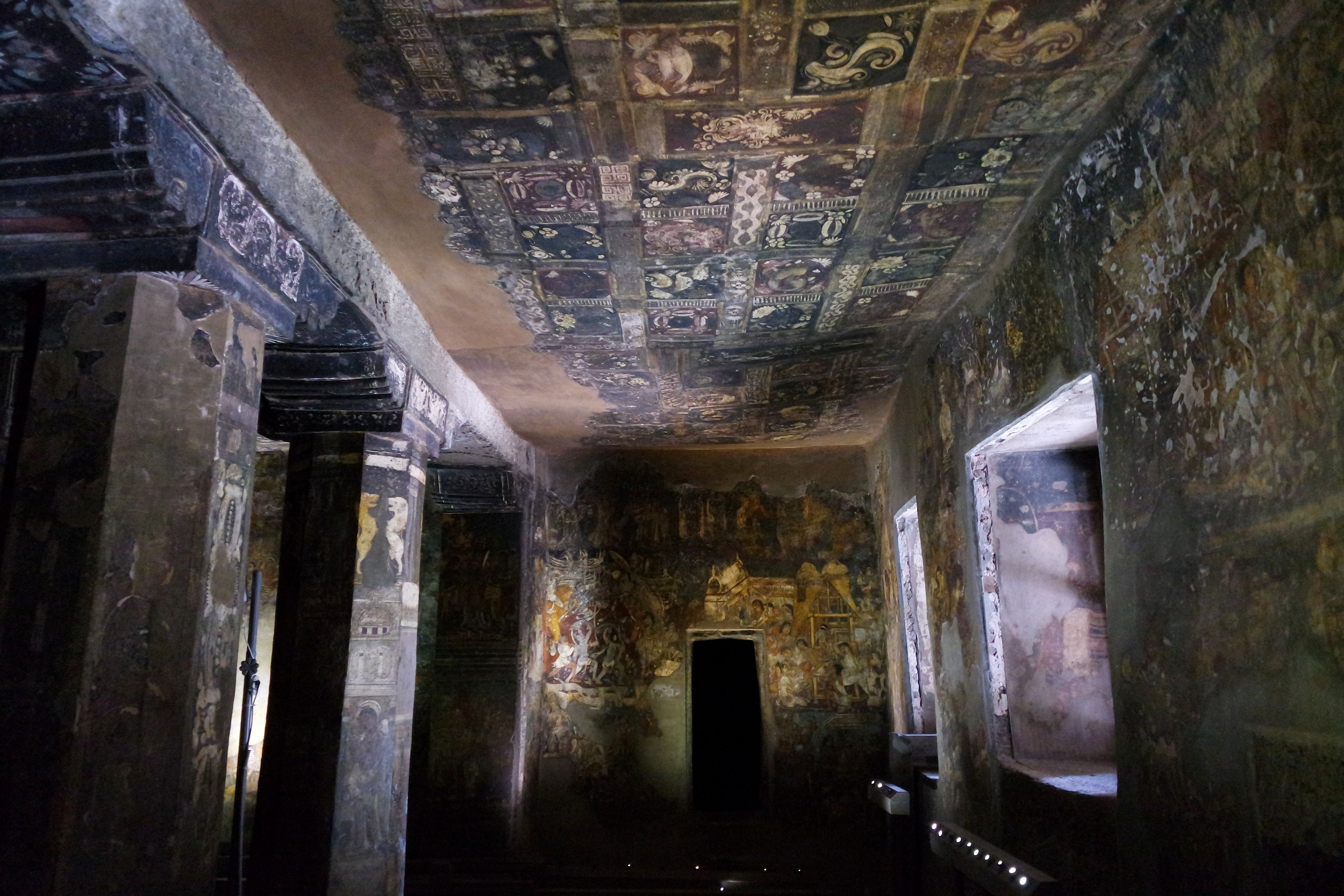
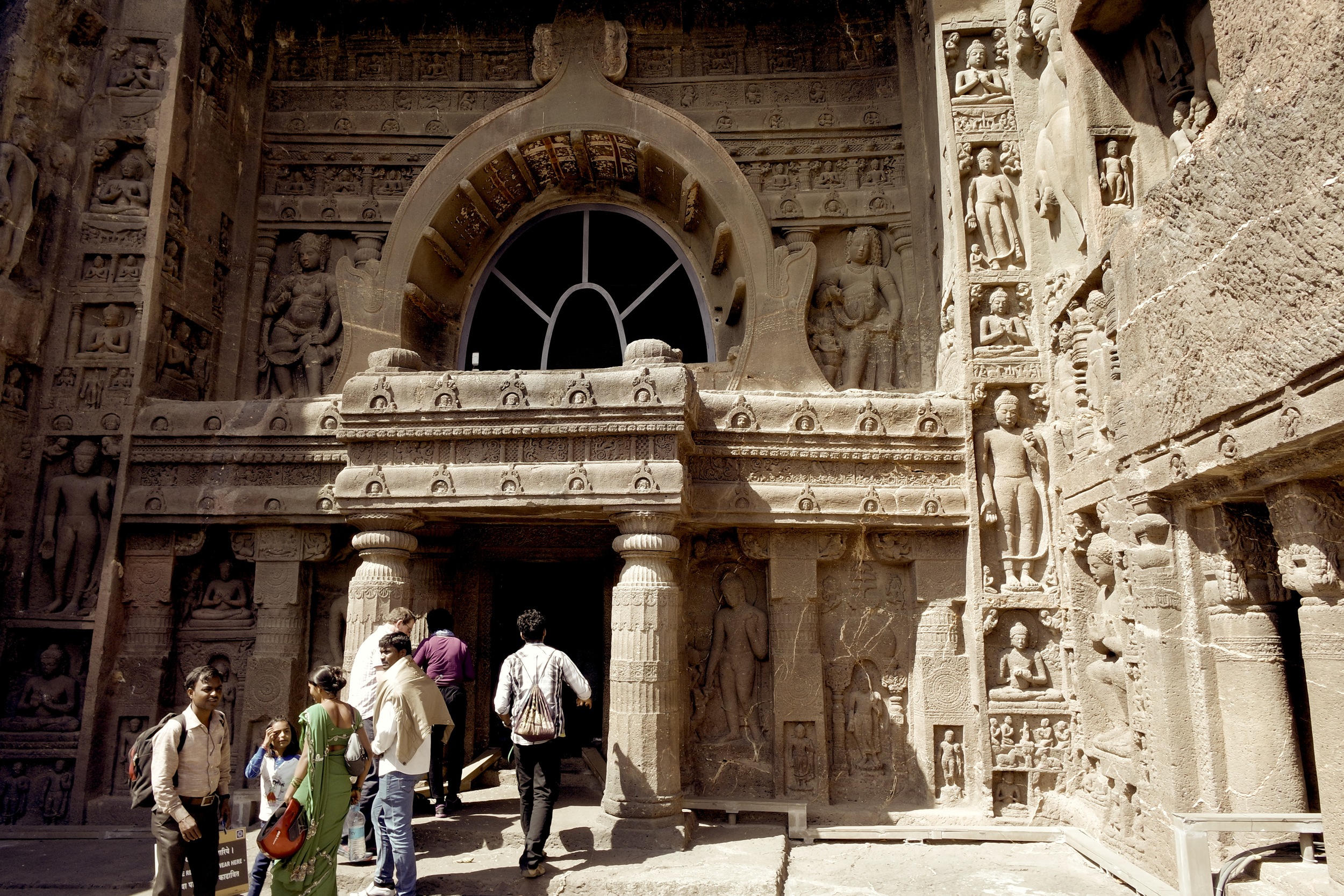
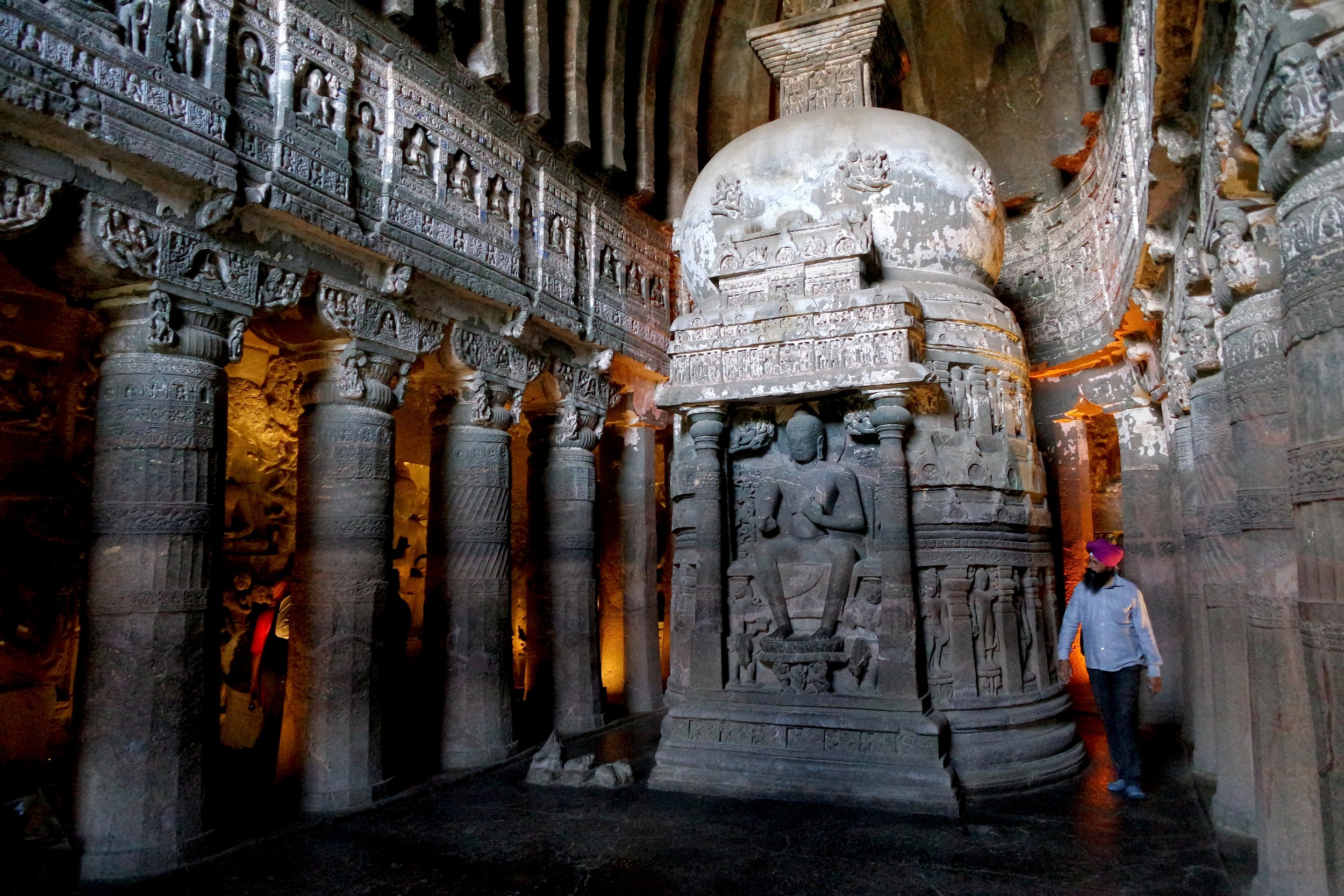
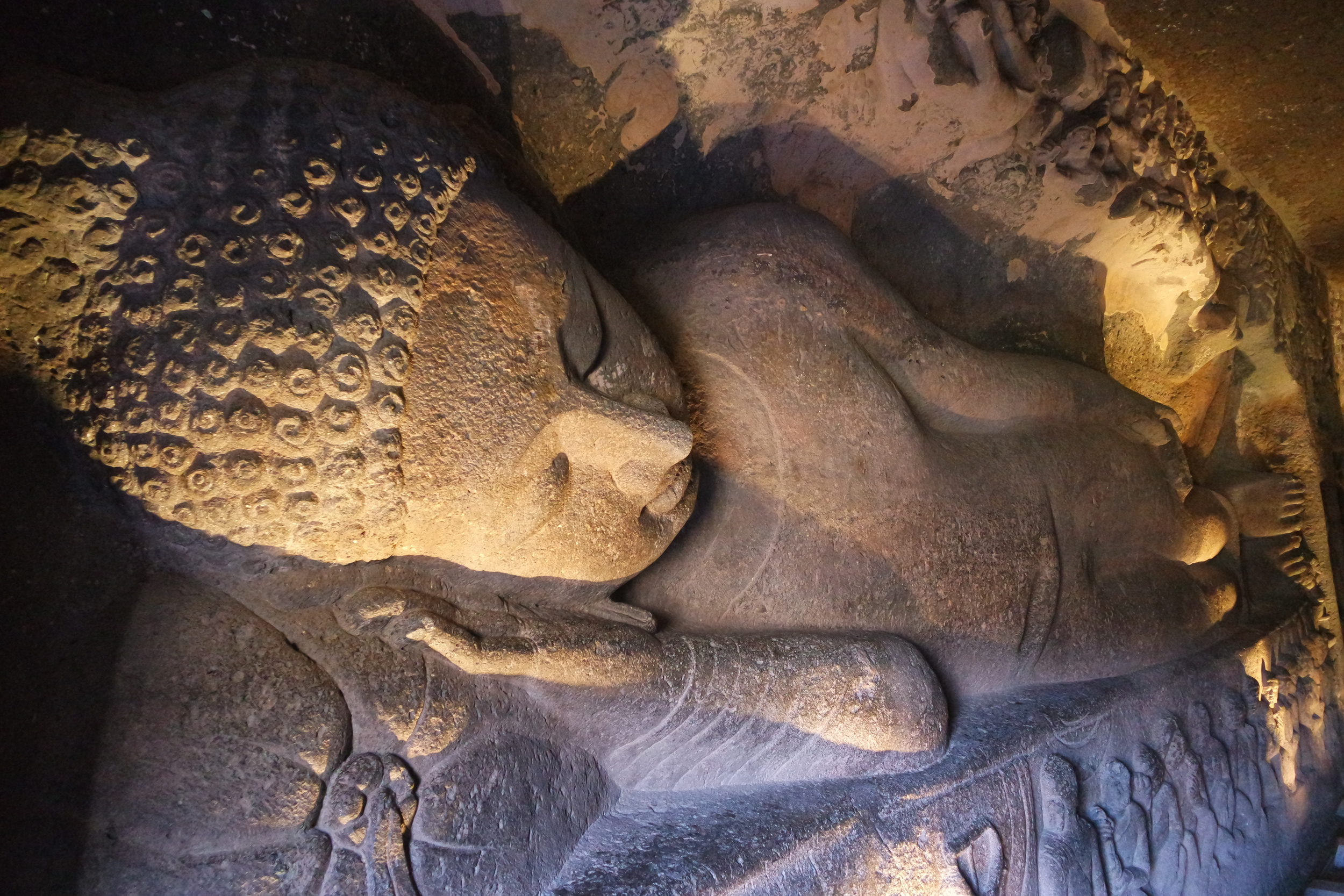
WHICH CAVES ARE THE COOLEST? WE HIT THE HIGHLIGHTS AT THIS ANCIENT BUDDHIST COMPLEX OUTSIDE OF AURANGABAD FAMOUS FOR ITS PAINTINGS AND STATUES.
Don’t get us wrong. The Buddhist caves carved into the mountainside at Ajanta are cool. It’s just that after a while, you experience a sort of repetitious sensory overload (“Oh, this one has a Buddha at the back…just like the others…”).
So, in case you don’t have the time or inclination to explore all 30, we’ve listed our must-sees.
“An elaborate Buddha, whose umbrella-like crown almost touches the vaulted ceiling, emerges from the mouths of sea monsters.”
RELATED: Ajanta Caves: 8 Tips Before You Go
Cave 1
Kick things off with this cave, famous for its elaborately painted vihara, or monastery. The mural depicts two bodhisattvas: Avalokitesvara, the personification of compassion, and Vajrapani, the spiritual energy of the enlightened mind. These flank the doorway to the antechamber.
The Buddha, awash in green light and centered in the large shrine at the rear, sits cross-legged in the dharmachakrapravartana mudra teaching position and was sponsored by Emperor Harisena. In this mudra, the thumb and index finger of both hands touch at their tips to form a circle. This circle represents the Wheel of Dharma, or in metaphysical terms, the union of method and wisdom.
Cave 2
The coolest part of this cave is its ceiling, dominated by a large mandala decorated with birds, flowers, fruit and abstract designs.
Cave 4
This is the largest vihara in the complex, but it was a bit too ambitious — part of the ceiling is said to have collapsed and it wasn’t ever completed. Look up to see the undulating ceiling, which features a cool wavy pattern created by lava flows.
The exterior is gorgeous. We learned that all of these caves were carved top-down. The entranceway features sculptures of lunging lions, maidens clutching trees and dwarves adorned with garlands.
To the right is a bas-relief of a bodhisattva as Reliever of Eight Great Perils. Curious what those are? They were common dangers for pilgrims of the past: bandits, snakes, elephants, lions, disease, floods, forest fires and false imprisonment in foreign lands.
Cave 7
Enter through an impressive double portico richly carved with elephants, lions, lotuses and small stupas.
An oblong vihara monastery from the late 5th century, the garbha griha (inner sanctuary) contains a Buddha statue in a preaching pose, as well as a seated Buddha sheltered by the Naga Muchalinda, a snake-like being who protected him from the elements after his enlightenment.
Cave 9
This chaitya, or prayer hall, from the 1st century BCE is built on a rectangular plan. The interior is divided into three aisles by 21 unadorned octagonal columns.
A large stupa stands on a high cylindrical base at the center of the apse. Because figurative sculptures of the Buddha were not produced during this period, stupas were built to enshrine sacred relics that were most often worshipped and became synonymous with chaityas.
The inside of this cave is two stories high, with a barrel vault ceiling on which rafters and purlins are carved like a wooden building. Although those curious devices are structurally unnecessary, they’re an aesthetic method to mimic the interior spaces of temples.
Cave 10
A Theravada prayer hall, it’s thought to be the oldest cave temple at Ajanta, dating to the 2nd century BCE.
Cave 17
According to one of the inscriptions found in the hall, this cave was designed to “cause the attainment of well-being by good people as long as the sun dispels darkness by its rays!”
Its large central hall is supported by 20 octagonal pillars and bounded by 17 dormitory cells, where the monks slept.
A panel above the doorway depicts the seven Manushi Buddhas (fully illuminated beings in human form).
Cave 19
The detailed exterior carvings to the right of the façade are incredible. A pair of yakshas (nature spirits) are sculpted on either side of the entrance.
The arched roof of the interior hall is carved in imitation of wooden ribs, mimicking the interior spaces of structural temples.
An elaborate standing figure of Buddha, whose umbrella-like crown almost touches the vaulted ceiling, emerges from the mouths of sea monsters.
Cave 26
A reclining Buddha, representing his moment of death prior to attaining nirvana, is a popular feature here. (Wally calls this the “Sleepy-time Buddha.”)
The cave’s stupa has a sculpted figure of Buddha in pralamba padasana mudra, with both feet on the ground and legs apart, as if seated on a throne.
We saw a Sikh man practicing circumambulation (literally, “walking in circles”), a devotional practice where you walk around a sacred object like this stupa, chanting a mantra.
LUNCH WITH HANUMAN
After a morning of exploring the Ajanta Caves, we stopped at a dhaba roadside restaurant for some chana masala
On the way back to Aurangabad, we stopped at a dhaba, or roadside restaurant, for lunch and enjoyed a delicious meal of chana masala seasoned with cinnamon, chile paneer (homemade cheese) and chapatti (flatbread).
A monument to the monkey god Hanuman stood across the road. Hanuman is regarded as a the perfect symbol of selflessness and loyalty.
Worshipping him helps counter any bad karma you’ve racked up by acting selfishly. Hindus believe he bestows fortitude and the strength to overcome the trials of life. –Duke
“Look up to see the undulating ceiling, which features a cool wavy pattern created by lava flows.”
